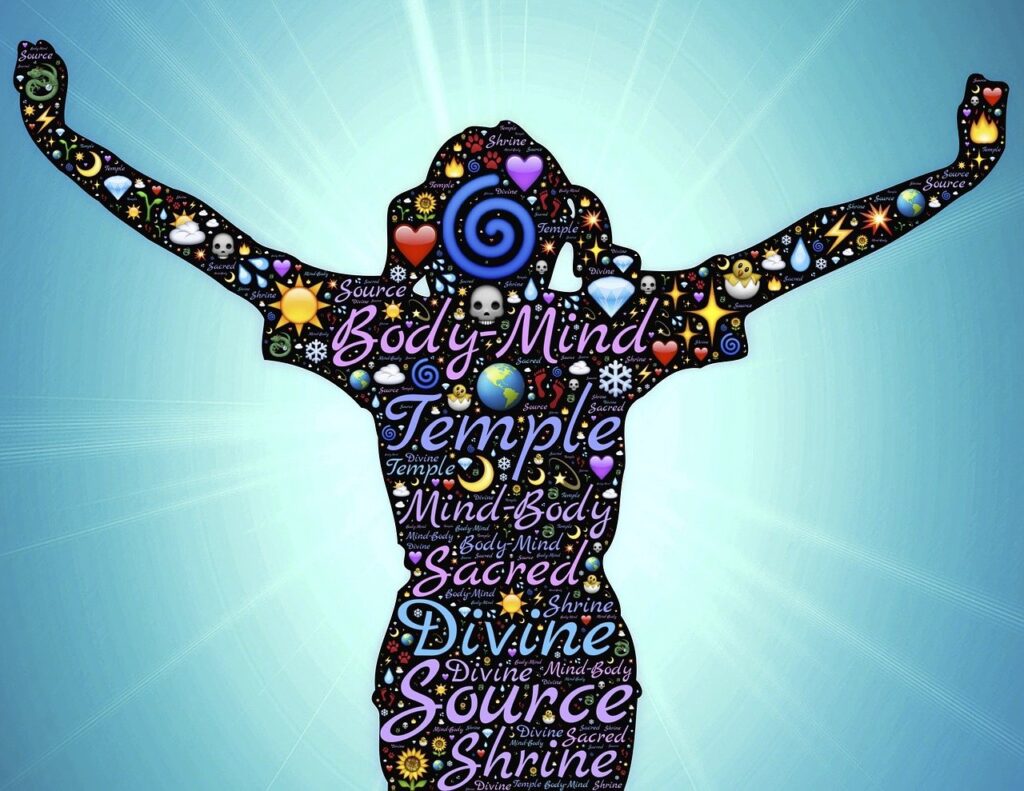Yoga’s Wholeness of Health

The three chapters of reading in “Tree of Yoga” this past week were a great reminder of what makes yoga a holistic practice. When we remember the tree from the roots to the fruit, we realize that embarking on the practice of yoga starts us out on a journey to heal ourselves physically, mentally, and spiritually.
“When a person connects the soul to the skin and the skin to the soul, when there is tremendous communion between the cells of the body and the cells of the soul, then that is holistic or integrated practice, because the whole of the human system has been integrated into a single unit in which body, mind, intelligence, consciousness and soul come together”
Most of our lives are spent in separation of all the above parts, leading us toward stress, disease, distraction, and distortion. This is what seekers of yoga begin to feel. We may be engaged in mental activity without awareness of the body. We may be engaged in bodily activity without the mind. Yoga requires an integrated effort of both, which begins to bring balance and peace to life.
Iyengar tells the biography of the great sage Patanjali, the author of The Yoga Sutras, and explains how his life’s works on grammar, yoga, and Ayurveda (the medical aspect of yoga) are the contributions that complete a holistic science. Patanjali’s Yoga Sutras explain the causes of the separation in our lives as a function of consciousness – “lack of knowledge, lack of understanding, pride, attachment, hatred, malice, jealousy. These are the causes that afflict us and bring physical, mental and spiritual diseases.” The first chapter of the Sutras, Samadhi Pada, deals with the definition of yoga as “yogah citta vritti nirodha”, the stilling of the fluctuations of consciousness. The second chapter, Sadhana Pada, deals with the physical practice that ultimately connects to the healing of the consciousness. The third chapter, Vibhuti Pada, covers the integrated results of the practices (samyama). And the fourth chapter, Kaivalya Pada, explains the final aim of yoga, union with the soul.
However, many of us do not come to yoga for this final aim. Most come to yoga to receive the by-products of the yoga practice. “Though the aim and culmination of yoga is the sight of the soul, it has lots of beneficial side-effects, among which are health, happiness, peace, and poise.” Asana and Pranayama, the practices we are most directed through in a studio class of yoga, are the gateways to all of these great side-effects. Between the two, clearing bodily systems and balancing physical energies along with nature’s elements all contribute to bring health to our embodiment and clarity to our consciousness.
Seeking balance of body, breath, and mind through three constituents of our nature (vatta/air, pitta/fire, and kapha/earth), is the foundation of Ayurveda, “the traditional Indian science of medicine”. “The aims of yoga and of ayurveda are almost the same. Both are concerned with self-realisation. The only difference is that yoga adopts a psycho-spiritual approach and ayurveda a physico-physiological approach”.
Our bodies are made up of the same elements of all of Nature – earth, water, air, fire, and ether. And all of Nature is run by 3 aspects of energy (gunas) – sattva (balance and lightness), rajas (creative energy), and tamas (inertia). While Yoga looks at the disturbances in consciousness stemming from the imbalances of the gunas, Ayurveda sees disease of the mind and body from the perspective of the Tri-Dosa, constituents of vatta (wind/air), pitta (fire), and kapha (earth). Whatever the disorder, Yoga and Ayurveda both consider three origins to determine any remedy: self inflicted by diet or activity, congenital by birth or genetics, and systemic by naturally occurring imbalances at different times of life. While Ayurveda may use prescriptions of diet and supplements to aid in healing, yoga requires us to apply uninterrupted awareness and discriminative intelligence to nurture and grow our entire “tree”.
Whether aiming for the final goal or just enjoying the byproducts of yoga, we must always put in effort. BKS Iyengar mentions again the vitamins we need to maintain our practices: “faith, courage, boldness, absorption, and tremendous memory to understand exactly what is happening in us today, what happened yesterday, the day before yesterday, and many days ago, with uninterrupted awareness.”
This Week’s Reading : “The Practical Approach” through “The Healing Art”